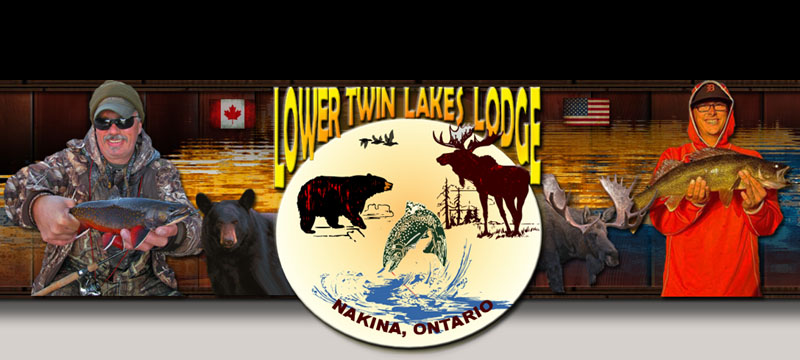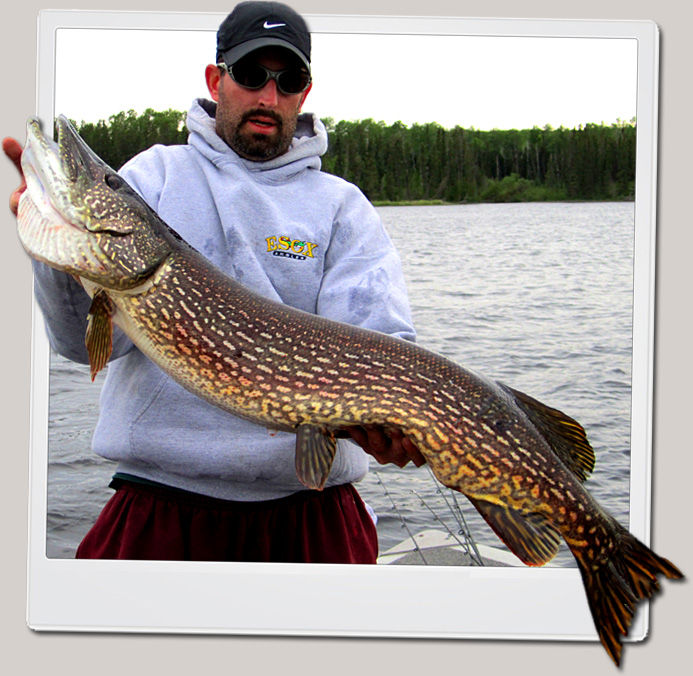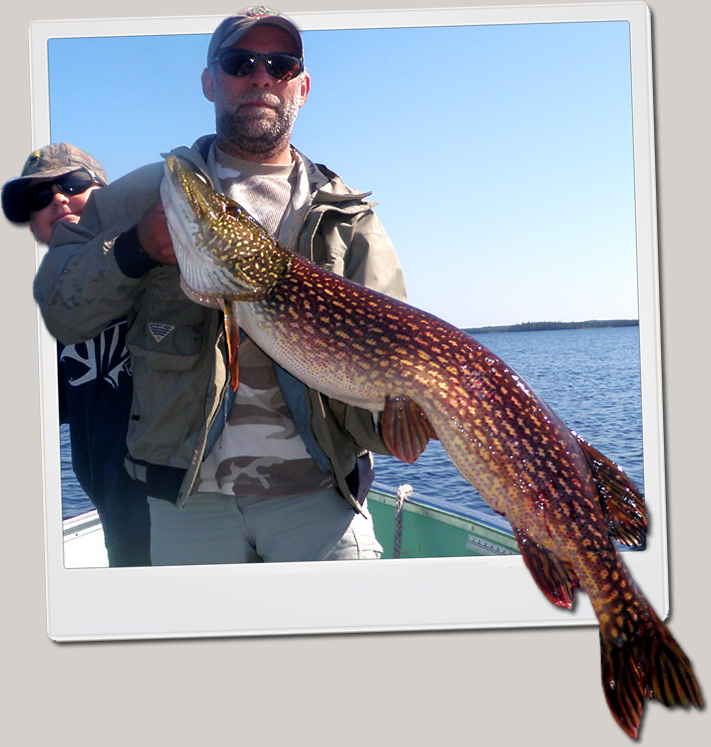


 Upper Twin Lake and Lower Twin Lake are located six miles east of Nakina, Ontario and both lakes have good Northern Pike fishing. Since we bought the camp the Pike fishing has continually become better and better each year and we have seen a dramatic improvement in size of the Northern Pike being caught and released by our guests.
Upper Twin Lake and Lower Twin Lake are located six miles east of Nakina, Ontario and both lakes have good Northern Pike fishing. Since we bought the camp the Pike fishing has continually become better and better each year and we have seen a dramatic improvement in size of the Northern Pike being caught and released by our guests.
There are a number of factors contributing to the great increase in Northern Pike. Since the 90s, new size restrictions means the prime breeding size Northerns need to be released. Because most taxidermists only make replicas now, people just need to take a picture of any giant trophy Pike they catch and let them go. Nobody keeps the whole fish anymore. Another big reason for the great increase in the Northern Pike population is lower fishing pressure. The lumber boom is over in Nakina and the population of Nakina is 1/4 of what it was back in the 90s. As a result there are very few locals fishing the surrounding lakes. The locals only target Walleye when they do fish.
Upper and Lower Twin Lakes are constantly fed food and fresh water from the Drowning River, which keeps the population of bait fish high and gives the Pike lots to eat. Upper and Lower Twin Lakes also have the most important ingredient for a perfect trophy Pike lake. These lakes have massive populations of Whitefish and it is common knowledge with die-hard Pike Fanatics that lakes with Whitefish produce the biggest Pike. Whitefish are a heavy oily fish and produce a rewarding amount of calories for the Pike compared to eating other fish like Walleye. A high calorie reward with low amounts of energy being used to catch the Whitefish means the Pike can grow fast and get big. The clean cool waters in the north posses less parasites so Northern Pike can live to be 40 or 50 years old compared to a 8-year life expectancy in warm waters father south.
In Upper and Lower Twin Lakes the biggest Northern Pike hang out in the dark water just off beaches and sandbars as well as where the Drowning River where flows between the two lakes. You will also catch them off rocky points, in the weed cover and sometimes down deep. Every year more and more 20-pounders get caught and released. In actual fact; one of the largest Northern Pike in Ontario's history was caught and released on Lower Twin Lake. In 1998 a big fat 56-inch 40-pound Northern Pike was caught and released off the dock. We don't want you to expect to catch a monster like that. Most Northern Pike you catch will be in the 2 to 7 pound range and you could catch between 20 and 50 in a day. If you target Northern Pike you should catch a couple over 10 pounds and maybe throughout the week you can pick up a Pike in the 12 to 20 pound range. A 20-pound Northern Pike would not be considered a trophy if you caught one every day but your chances are good to get at least one of that caliber.

Northern Pike in the north do not like scented baits. They may work well in the south where the water is clouded with algae but in the north it's best not to put artificial scent on your lures. Salted baits do work in the north. Some Pike Hunters have been filling a small container up with table salt and adding a little bit of lake water to the salt to make a paste so they can dip their lures in the salt every couple of casts. It's proving to increase strikes by mimicking the ions released by a bait-fish's lateral lines and covering up human scent.
Northern Pike will hit just about any lure. Many of our guests have caught large Pike on little jigs while Walleye fishing. It's the motion of your lure that is most important. Northern Pike tend to go after erratic motion. Casting out a lure and just retrieving it at a constant speed is making a presentation that the Northern Pike find boring. This may explain why a big 20-pound Pike bothers going after a tiny little Walleye jig. It's not the size; it's the motion they go after. When retrieving a lure try to mix jerking motions with jigging motions and also move your rod tip from the far left to the far right and back once in a while to change the angle of retrieval. Little things like this make a big difference, especially with bigger Northern Pike. A Northern Pike that is not even hungry or has stopped feeding because of atmospheric conditions will still go after erratic motion because their instinct to attack anything that appears injured is just too strong.
Traditionally the most popular casting lures for Northern Pike have been Dardevle Spoons, Johnson Silver Minnow and the Mepps' Musky Killer. It's possible that over the years Northern Pike may learn not to hit these lures because so many people use them. Don't be afraid to try something new and don't think you need to use big lures to catch big Pike. Half the trophy Pike caught in Ontario have been on tiny Walleye baits. You should also consider fishing the surface with large Pike flies or surface lures, especially in areas of thick weed cover. The most popular Pike flies are the Rabbit Strip Pike Bunny, Red & White Pike Fly, Dahlberg Diver and the Mcmurderer. The most popular surface lures for Northern Pike are the Spook and the Jitterbug.
It's illegal to put a piece of Perch or Walleye meat on a hook for bait. However, after cleaning a Walleye or Perch, you can save the belly meat or cut out the gullet and wipe the scent all over your Pike lures. This will help increase strikes.